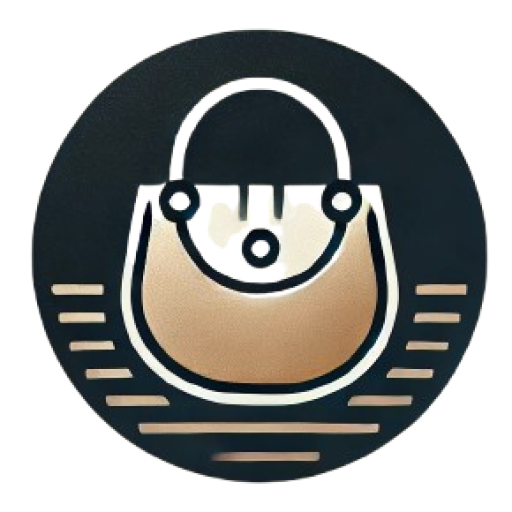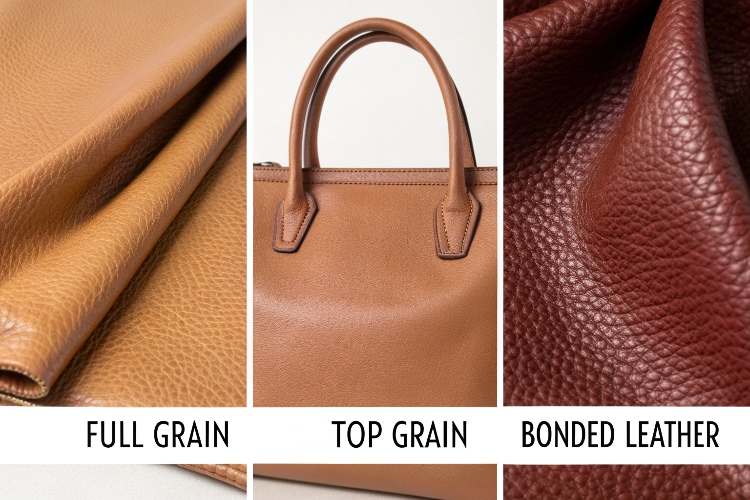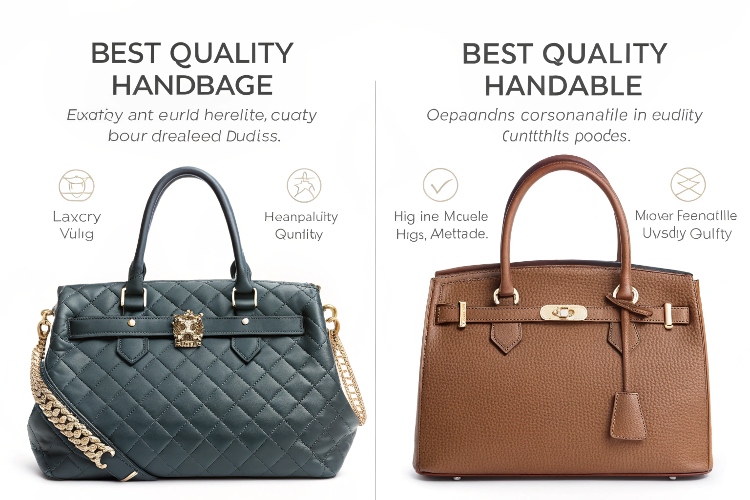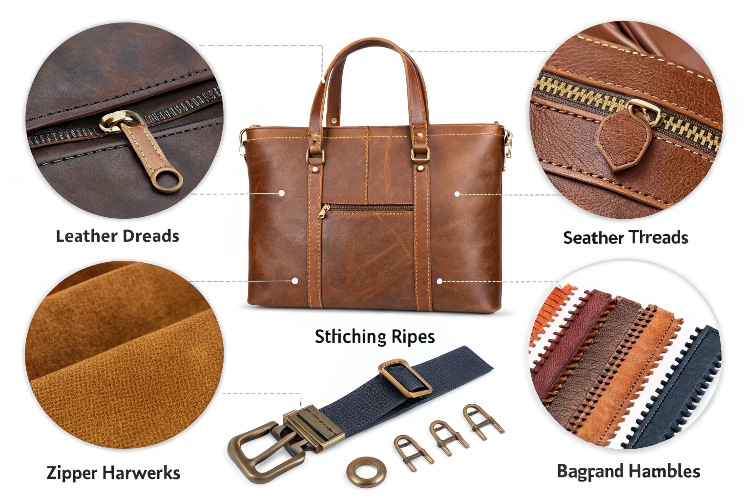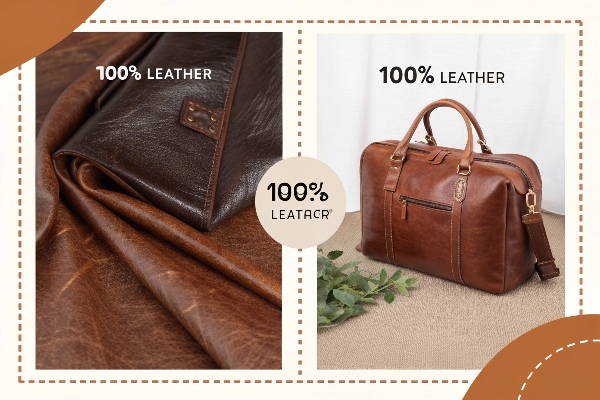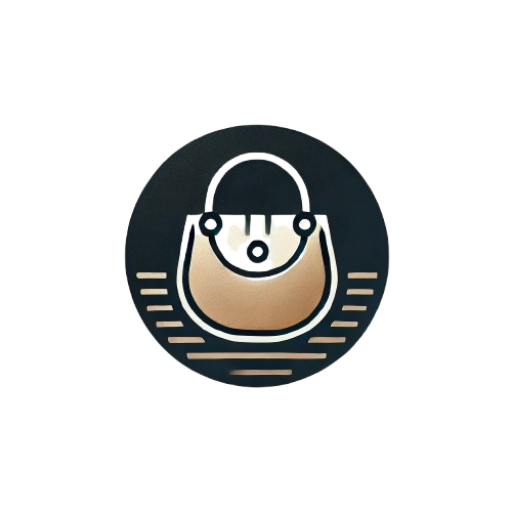- Premium Materials
- Cost: High-quality hides (e.g., full-grain calfskin) are rare and require meticulous tanning (€50–€200+/m²).
- Example: Italian tanneries like Bottega Veneta’s suppliers charge premium prices.
- Labor-Intensive Craftsmanship
- Why? Hand-cutting, stitching, and finishing take hours (e.g., 20+ hours for a Loewe Puzzle Bag).
- Skilled Artisans: Limited workforce with specialized training.
- Brand Value & Design
- Luxury Markup: Heritage brands (e.g., Gucci, Prada) invest in iconic designs and marketing.
- Limited Editions: Exclusivity drives prices higher.
- Durability & Longevity
- Lifespan: A well-made leather bag lasts decades (vs. fast-fashion alternatives).
- Ethical/Sustainable Practices
- Certifications: Eco-friendly tanning (e.g., Leather Working Group Gold) adds costs.
Expert Tip: Higher cost ≠ better quality.
Cost Structure Breakdown (Material, Labor, Brand Premium)
Material: Leather Costs Are Ridiculous
The leather on luxury bags you touch is mostly calfskin (like Italian Veal Calf) or exotic skins (crocodile, ostrich). Regular cowhide wholesales at $5-10 per square foot, but Hermès’ Togo calfskin sells for $50/square foot. Crocodile skin is worse – a full belly skin costs $2000, not counting 30% waste during processing.
Labor: Old European Hands Outvalue Machines
In Florence workshops, senior artisans with 30 years’ experience earn €45/hour (~$50). Making a tote requires cutting 30 leather pieces and 2000+ stitches, taking 3 days. Assembly lines glue edges, but luxury brands force saddle stitching – exactly 5 stitches per centimeter – tripling labor costs.
Brand Premium: Logo Claims 60% of Price Tag
NYU Stern School research proves: Of $1500 for LV Neverfull, $925 pays for the monogram pattern. Luxury brands spend 17% of revenue on ads (3x R&D budget) – those airport billboards get factored into your bag’s price.
Craftsmanship & Time Investment (Handmade vs Machine Production)
Obsessive Details in Handmade Bags
Hermès Kelly bags use double-needle backstitching: two stitches forward, one back for flawless seams. Artisans lubricate needles with French linen wax thread every three stitches. Machines can’t replicate this – apprentices need 5+ years training.
Time Is the Ultimate Luxury Material
Mulberry’s Bayswater requires 12 dips for tea-stain coloring, each needing 24-hour drying. The 18-week minimum production cycle is 15x longer than fast fashion bags. Your 6-month wait? Mostly leather oxidation time.

Market Strategy & Consumer Psychology (Why People Pay)
Luxury Hunger Games
Chanel’s 2023 move: Cut Classic Flap stock by 30% but raised prices 25%. Resale markets immediately showed $800 premiums. This artificial scarcity turns bags into investments – Japanese vintage data shows well-kept Hermès Birkins appreciate 13% annually, outperforming gold.
Social Currency’s Real Value
Harvard Business School found: Carrying logo bags boosts business deal success by 22%. In Miami socialite circles, Himalayan crocodile bags and regular leather bags grant access to different charity events. This invisible class passport justifies five-figure prices.
Craft Complexity (Time-Consuming Hand Stitching & Artisan Wages)
Every Stitch Burns Time
Have you touched a fully hand-stitched leather bag? Those with uneven stitches cost more. A little-known fact: Hermès Kelly bags require 18-24 hours just for stitching, using a 200-year-old “saddle stitching method” – this technique involves threading two needles through the same hole simultaneously, leaving no visible thread ends. In Florence workshops, masters must redo entire seams if they make one wrong stitch to avoid leaving marks.
Artisan Wages Will Shock You
Milan’s leatherworkers union revealed data last year: LV subcontractors earn up to €45 hourly (≈350 RMB), excluding annual bonuses. French niche brand Moynat requires three years of basic training for sewers – apprentices spend six months just learning how to hold needles. This labor cost directly doubles bag prices.
Machines Can’t Replace Humans
Ignore claims about “handmade being a gimmick.” Machines can only sew at fixed 45-degree angles, while humans adjust between 30-60 degrees – this detail determines whether a bag survives a decade of use. Japanese lab tests prove: hand-stitched seams are 37% stronger than machine-sewn ones, as threads create 3D structures within leather.
Hidden Time Bombs
Guess how long edge paint treatment takes? MCM artisans use wooden sticks to polish edges six times, with 24-hour drying between each coat. This excludes other time sinks like avoiding natural scars when cutting leather or matching grain patterns. A basic tote requires one week just for material preparation – one shaky hand ruins entire hides.
Vanishing Craftsmen
UK Leather Association sounded alarms last year: fewer than 12% of leather workers are under 30. An Italian family workshop saw three sons choose pizza delivery over heritage – masters capable of complex constructions now command €120 hourly with no takers. This explains why some brands secretly switched to machine stitching, leaving only top-tier lines clinging to handcraft.

Scarcity and Marketing Strategies (Limited Editions, Celebrity Endorsements)
Limited Editions: The Real-Life Hunger Games
You’ve definitely heard about Hermès Birkin bags requiring a 6-year waitlist, or LV collections selling out immediately after launch. These “limited editions” aren’t accidents—they’re meticulously engineered scarcity tactics. For example, Hermès tightly controls production of popular bags, even forcing customers to buy other products first (an industry practice called “prespend”) to qualify for the waitlist. According to a 2022 New York Times report, the actual production cost of a Birkin might be less than 20% of its retail price, but with the “scarcity” label, resale prices triple.
Celebrity Endorsements: Why You’ll Pay an Extra $500
What celebrities carry, fans chase—a psychological phenomenon called “Veblen effect” (desiring items precisely because they’re expensive). When CELINE recruited BLACKPINK’s Lisa as ambassador, sales of the Triomphe bag surged 270% (data from Vogue Business 2023 research). More ruthlessly, brands create “exclusive editions” for stars. After Rihanna carried a custom Dior Saddle Bag, the standard version’s price jumped 23% because people decided “owning what the queen wore is worth it.”
How Social Media Fans the Flames
Remember Telfar’s grocery tote? This niche American brand went viral on TikTok using a lottery-style purchase model—releasing only 100 bags per drop with 500,000 people competing. Result? A $200 bag resold for $1,200. Wall Street Journal analysis shows this strategy makes young consumers feel “securing one equals social status,” completely disregarding practicality. Even Coach has joined the game—its 2024 Shark Bag could easily mass-produce, but instead uses a “10-minute weekly Tuesday drop” tactic.
The Math Behind It: You’re Buying Probability, Not a Bag
An Oxford University study reveals: when a product’s availability probability falls below 10%, consumers pay 68% more. That’s why Tiffany’s limited editions always cap at 199 pieces, and Gucci intentionally distresses runway items—“imperfection” becomes a premium justification. Balenciaga recently escalated the game by re-releasing its classic Motorcycle Bag exclusively for cryptocurrency payments, dragging crypto enthusiasts into the luxury frenzy.
Secondary Market Value (Classic Style Resale Price Analysis)
Why can classic styles sell for higher than retail price?
You must have heard about someone selling a used Hermès Birkin for more than the boutique price. For example, The RealReal 2023 Annual Report states that a well-maintained 35cm Birkin resells for 40-60% above retail. This phenomenon occurs specifically with strictly controlled production styles – Hermès releases fewer than 200 handmade bags in specific leathers globally each year.
The game between market demand and scarcity
A real case: At Paris vintage store Vintage Bar, someone paid 30% extra for Chanel’s 1995 first-generation Classic Flap. Current boutique versions have lighter metal chains and thinner leather. Vestiaire Collective data shows well-preserved 1990s Chanel bags command 22% higher prices than post-2020 counterparts.
The secret of increasing value with age
Take Louis Vuitton’s Speedy 25 as an example. Pre-2000 versions now sell for $1,200 (original $760). The key lies in hardware – early models used gold-plated brass buckles that outwear current alloy versions, with thicker vegetable-tanned leather handles. Japanese vintage merchant Brand Off teaches buyers to authenticate production years through serial numbers, like wine vintage identification.
How maintenance costs affect resale prices
New York reseller Fashionphile checks four critical points: handle discoloration, lining adhesive deterioration, metal oxidation, edge wear. Bags serviced through official after-sales programs achieve 15% resale premiums. However, bags with unauthorized recoloring or part replacements see prices halved.
How resale platforms change the rules
StockX (the sneaker platform) began selling Hermès in 2021 using dynamic pricing systems showing real-time transaction prices. A 22cm Mini Kelly sold for $28,000 on their platform last year, doubling retail price. This transparency pushes rare styles to record highs, while common styles struggle to sell even at 30% below boutique prices.
